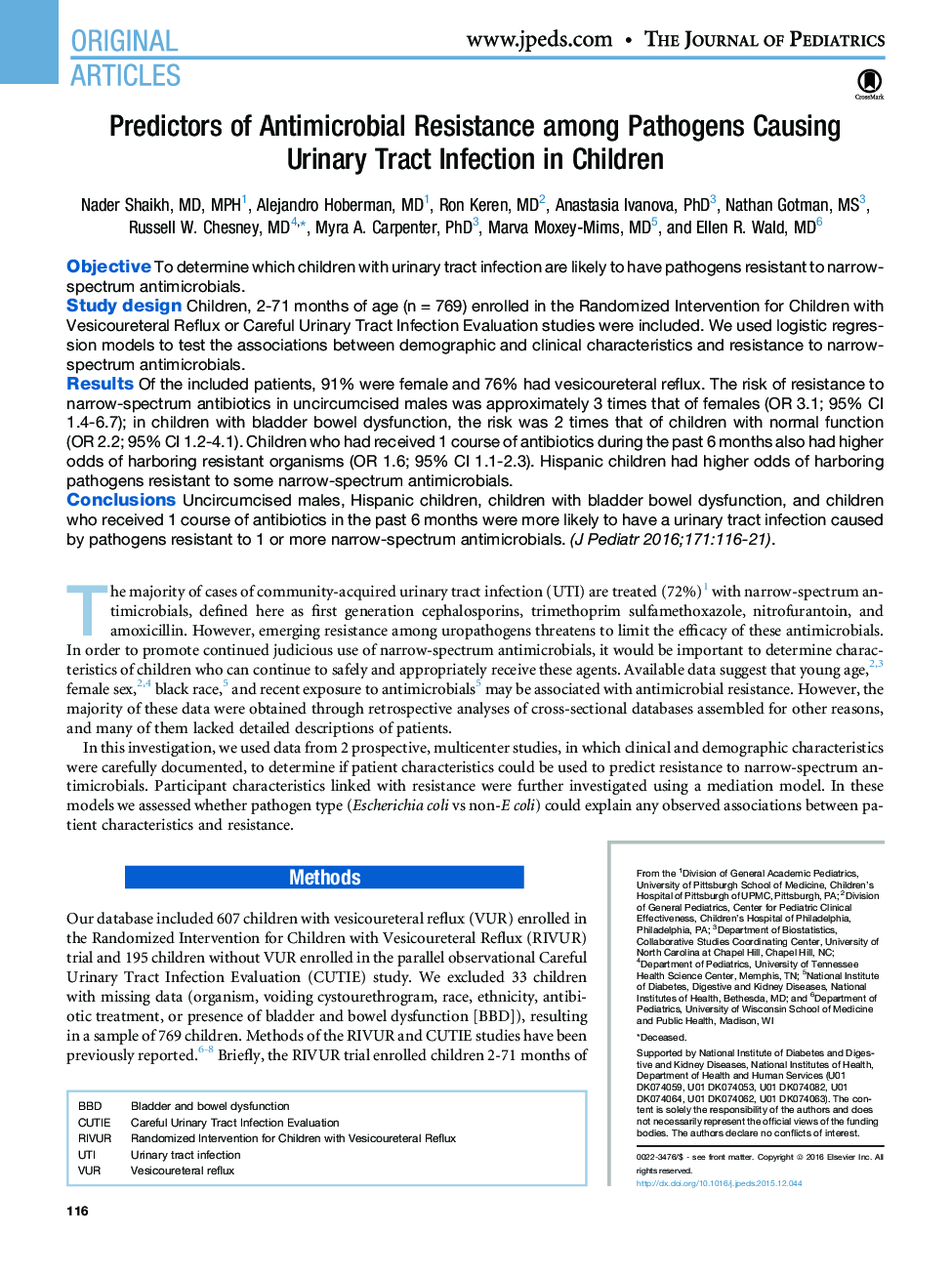| Article ID | Journal | Published Year | Pages | File Type |
|---|---|---|---|---|
| 4164542 | The Journal of Pediatrics | 2016 | 6 Pages |
ObjectiveTo determine which children with urinary tract infection are likely to have pathogens resistant to narrow-spectrum antimicrobials.Study designChildren, 2-71 months of age (n = 769) enrolled in the Randomized Intervention for Children with Vesicoureteral Reflux or Careful Urinary Tract Infection Evaluation studies were included. We used logistic regression models to test the associations between demographic and clinical characteristics and resistance to narrow-spectrum antimicrobials.ResultsOf the included patients, 91% were female and 76% had vesicoureteral reflux. The risk of resistance to narrow-spectrum antibiotics in uncircumcised males was approximately 3 times that of females (OR 3.1; 95% CI 1.4-6.7); in children with bladder bowel dysfunction, the risk was 2 times that of children with normal function (OR 2.2; 95% CI 1.2-4.1). Children who had received 1 course of antibiotics during the past 6 months also had higher odds of harboring resistant organisms (OR 1.6; 95% CI 1.1-2.3). Hispanic children had higher odds of harboring pathogens resistant to some narrow-spectrum antimicrobials.ConclusionsUncircumcised males, Hispanic children, children with bladder bowel dysfunction, and children who received 1 course of antibiotics in the past 6 months were more likely to have a urinary tract infection caused by pathogens resistant to 1 or more narrow-spectrum antimicrobials.
